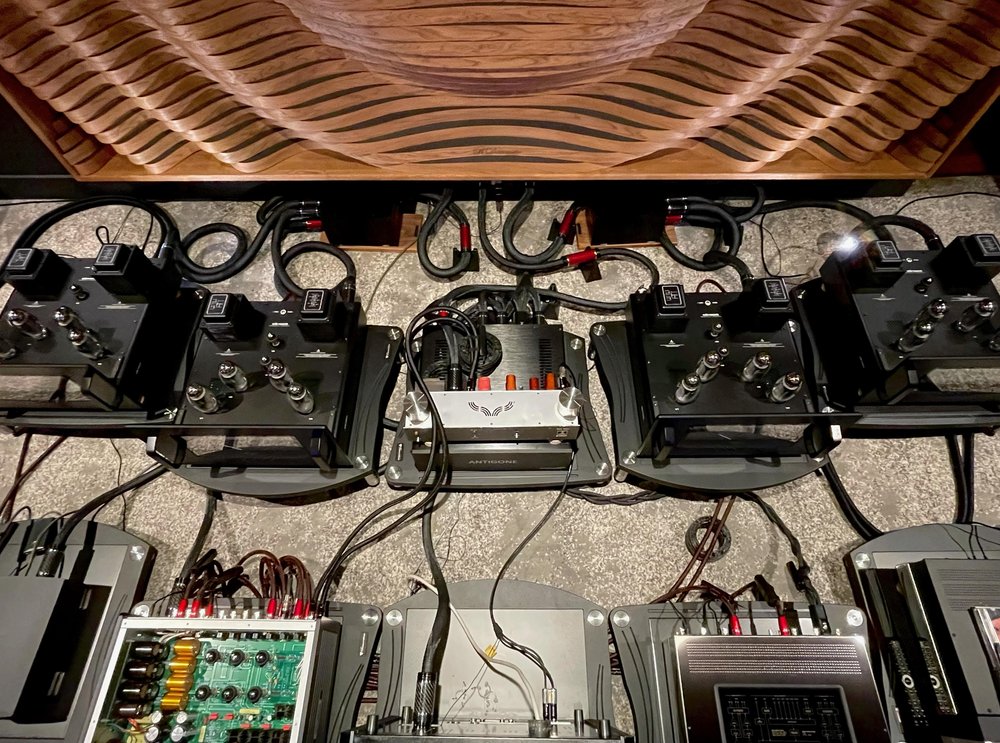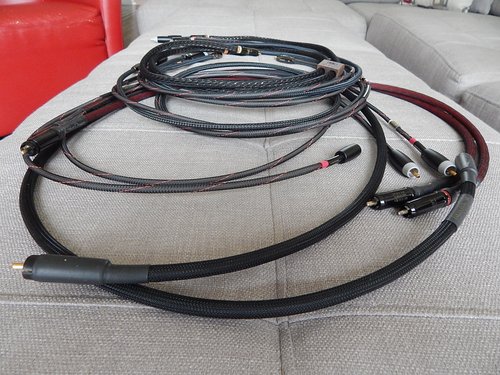
All prices listed are in US$
Welcome to “3 things I learned about…”, a new series in which I talk about the top three things I learned about some aspect of audio—this time, interconnects—based on my personal journey. Of course, since this journey is my own, the conclusions I arrived at in these audio aspects may not be the same as those you arrived at from your own journey.
To start off, let me make a few things crystal-clear: First, I’m of the opinion that cable design is a thing, which is why some audio cables perform better than others, and you can’t convince me otherwise. I’ve heard the differences. Second, please keep in mind that this text reflects my personal findings, based on my experience with the systems I owned throughout my journey.
As well as being a believer in better cables, I also prefer them to speakers or amplifiers as a tool to improve my system. That’s because they’re more lightweight, resilient, and usually quite a bit cheaper than the aforementioned audio components. It means I can buy and sell them to my heart’s content without the shipping costs, headaches, and heartaches (you should’ve seen what UPS did to my beautiful Audio Research D115 amp) that sometimes come with buying and selling heavier, bulkier, and more expensive things.
This also explains why I’ve gone through many cables in the past decades. That’s especially true of interconnects—16 pairs in all*. That’s quite a bit of empirical evidence. So, without further ado, I’ll divulge my three lessons about interconnects, and I’ll give you something else: for those who like it when a winner is picked, I’ll give you two winners—the two cables of the bunch that sounded best to me.
After a long series of AB shootouts using my system in one configuration or another over a long period of time, here are 3 things I learned about interconnects:
1. Price is NOT indicative of sound quality
Except under $100. In my experience, cables costing under $100 will not sound as good as those priced above $100. There just seems to be more quality involved in the construction of the cable once you hit that $100 mark, which is a pretty low sum when we consider how much audiophile products can go for.
Among the cables I tried, none under $100 sounded as good as anything over $100. But once I started buying cables priced above that threshold, things weren’t so clear cut. In fact, I found that many of the lower-priced cables were better than the higher-priced ones. This could, in part, be because the differences in cost between many of the cables I used weren’t that great. In any case, I advise anyone looking to buy a cable not to automatically assume that a $300 one will outperform a $200 one. It’s often not the case, and only a direct comparison between cables can reveal which you’ll prefer. I’ve also found that in cases where a manufacturer builds a line of cables going from less expensive to more expensive, the cable in the middle of the line often occupies the sweet spot. That cable tends to be very well-balanced and do everything right before the law of diminishing returns kicks in with the next, more expensive model up the line.

2. Disconnecting and re-connecting cables has a positive impact
I’m not talking about cleaning the cable tips, although the fact that this method works may have something to do with a cleaner connection. After the interconnects have been in my system for a while, every time I do the simple act of unplugging and re-plugging them, the music sounds better—more vivid. After scouring the Internet for clues as to why this might be, the only explanation I could find was that maybe the friction caused from removing the cable removes dirt from either the component’s jack or the cable’s connector and thus improves the signal flow when the cable is reinstated. If you have a better explanation, I’m all ears.
If this trick actually works—it did for me—then it has an important implication: this electric phenomenon will affect any AB comparison between two sets of cables. If one is comparing two pairs of interconnects of comparable sound quality, the new one, assuming it’s been broken in, could sound better than the one that’s been plugged in for some time because the connection will be cleaner, and thus more conductive. As such, I wouldn’t be too quick to sell off the old cable without first switching up the comparison rules. Don’t just do an an AB, but maybe an ABA, or ABBA (this test comes with catchy hooks), or ABAABBBA or… well, you get my drift.
One final thing: the improvement that resulted from this trick always came in terms of clarity only, no extra warmth or weightiness.
3. Cables are NOT system dependent
During the countless AB tests I’ve performed, I’ve never experienced a situation in which I preferred one cable over another with this gear, but not that gear. If Cable A sounded better than Cable B on one amp, Cable A invariably sounded better than Cable B on a different amp. I’ve simply never had a case where my preference order got reversed because I performed the AB comparison through a different piece of hardware. The winner from the get-go was always the winner.
That said, I believe it’s entirely possible for you to pick a different winner than the one I picked. After all, you and I hear differently, in which case it would be less about the cable being “system dependent” than “listener dependent”.
If my admittedly limited experience** is anything to go by, then my theory is that between two pairs of interconnects that sound sufficiently different, the listener will likely always prefer the same one no matter how many amps or preamps the listener tries them on.
So, which two of the 16 pairs of interconnects did I like best? For the longest time, the champion was the Chord Anthem. It beat one challenger after another. No matter what interconnects I put up against the Anthem, I always preferred the latter. With it in my system, music just sounded more real.
That suddenly changed when a friend of mine kindly gifted me with the handmade Hyacinth interconnects from Silver Audio. They made music sound even more real. Unfortunately, Silver Audio is no longer in business, but I’ve seen the company’s cables pop up on the used market.
In my room, the Chord Anthem beat all the other cables, which includes more expensive ones, but the Silver Audio Hyacinth beat the Chord, which was 40% more expensive than the Hyacinth. Just goes to show that, well, please refer to lesson #1.
If you’d like to submit your own “3 things I learned about…” column, send it to us here. If we publish it, we’ll pay you the equivalent of $60 CA for doing so. Multiple submissions accepted. Don’t be shy—Share!
* Monster Interlink 300 MkII ($30), Audioquest Golden Gate ($80), AudioQuest Columbia ($250), AudioQuest Sky ($2500), Harmonic Technology Pro Silway Mk II ($400) and Mk III ($480), Silnote Morpheus Reference ($1000), Anticables XLR (the original version), Anticables RCA (newer version bought in 2021, $300), Silver Audio Hyacinth ($275), Tara Labs RSC ($700), Nordost Heimdall XLR ($630), Straightwire Crescendo ($900), Chord Anthem ($465), Kimber PBJ ($60), Linn Analogue Interconnects ($130)
Most of the above cables were 1 meter in length and all were RCA-terminated unless otherwise noted.
** I realize that the 16 pairs of interconnects I’ve tried are but a drop in the vast ocean of available interconnects.
Read more of this series:
· 3 Things I Learned About… Amplifiers
· 3 Things I Learned About… Digital Playback
· 3 Things I Learned About… Speakers
· 3 Things I Learned About… Magnepan Speakers
TO SUBMIT YOUR OWN “3 THINGS I LEARNED ABOUT… “ ARTICLE (IT CAN BE ABOUT ANYTHING AUDIO-RELATED), SEND IT HERE, AND IF WE DECIDE TO PUBLISH IT, YOU’LL GET PAID!










Leave a Reply